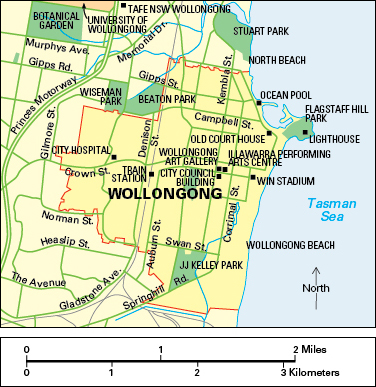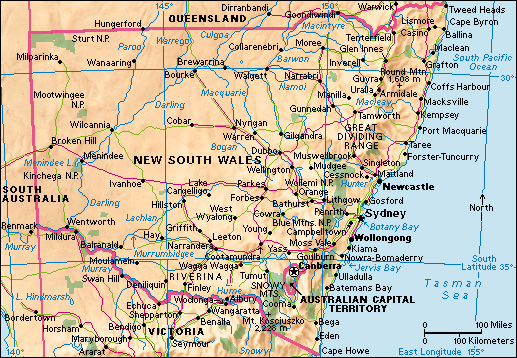Wollongong << WOOL uhn `gawng` >> (urban center pop. 20,466; statistical area pop. 134,762) is an industrial center on the southeast coast of Australia. It is the urban center of the City of Wollongong, a local government area that includes a number of other communities. Wollongong lies 42 miles (68 kilometers) south of Sydney. It is in the Illawarra coastal region of the state of New South Wales. Notable bodies of water in the region include Fairy Creek and Lake Illawarra. 
Many residents of Wollongong work in the construction, education, health care, and tourism industries. The University of Wollongong provides employment and higher education. The Wollongong area is also noted for coal mining and metal manufacturing. Port Kembla, just south of Wollongong, is an important industrial and shipping center. 
Wollongong has many historic buildings that date from the mid-1800’s, including St. Michael’s Cathedral. Built in 1859, the cathedral was designed by the Australian architect Edmund Blacket. Wollongong is also known for its two lighthouses. Wollongong Breakwater Lighthouse, at Wollongong Harbour, was completed about 1872. It helped ships enter the harbor safely until it was officially retired in 1974. Wollongong Head Lighthouse, at Flagstaff Point, was built in 1936.
The Wodi Wodi people are the traditional inhabitants of the land on which Wollongong stands. They are a clan of the Dharawal Aboriginal peoples. In 1770, the English explorer James Cook sailed along and charted Australia’s entire eastern coast. In 1796, the English explorers George Bass and Matthew Flinders sailed along the southeast coast of Australia and went ashore near Lake Illawarra.
Settlers began moving to the Wollongong area in the early 1810’s. Wollongong was established as a township in 1834. The area’s early industries included dairying, logging, and mining. In 1902, an explosion at the Mount Kembla coal mine killed 96 people. It was one of the deadliest industrial disasters in Australian history. Wollongong became a city in 1942. In 1947, it became part of a larger local government area called the City of Greater Wollongong, later renamed the City of Wollongong.
